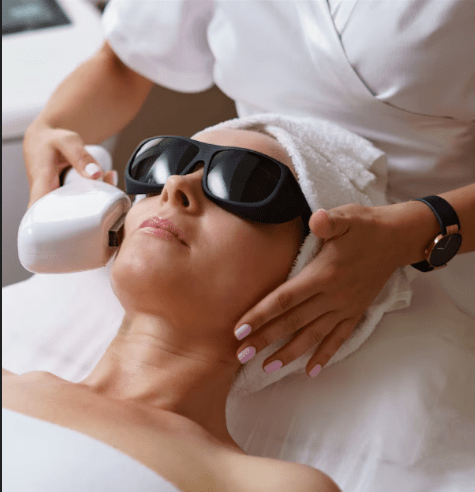SMILE (Small Incision Lenticule Extraction) is one of the most advanced forms of laser vision correction available today. It has gained widespread recognition for being minimally invasive, flapless, and offering fast recovery with excellent visual outcomes. But how safe and effective is it in the long term, especially for patients with a pre-existing medical history?
This article explores the long-term results of SMILE eye surgery in patients with systemic or ocular conditions, based on clinical data, research studies, and real-world outcomes.
🔬 What Makes SMILE Different from Other Procedures?
SMILE uses a femtosecond laser to create and remove a small lens-shaped piece of tissue (lenticule) through a micro-incision, correcting nearsightedness and astigmatism. Unlike LASIK, it does not involve creating a large corneal flap, making it a safer option for certain medical patients.
Unique advantages for patients with medical conditions:
- Less disruption to corneal nerves (→ fewer dry eye symptoms)
- Reduced risk of flap-related complications
- Stronger postoperative corneal biomechanics
- Potentially lower inflammatory response
🧠 Understanding Long-Term Outcomes in Medical Patients
✅ 1. Visual Stability and Accuracy
- Studies show 95–98% of patients maintain 20/25 or better vision up to 5–10 years after SMILE.
- For medical patients, visual outcomes are comparable—as long as the systemic condition is stable and well-managed.
- Common examples:
- Diabetic patients with controlled blood sugar achieve similar long-term clarity.
- Autoimmune patients in remission have shown stable outcomes with no significant recurrence of inflammation in the cornea.
🔍 Clinical Research Example:
A 2021 meta-analysis in Ophthalmology and Therapy found no significant difference in visual outcomes between medically healthy and medically complex patients (e.g., stable diabetics, mild autoimmune disorders) who underwent SMILE, provided proper pre-op screening was done.
✅ 2. Corneal Health and Biomechanical Integrity
- SMILE preserves more of the corneal anterior stroma, which contributes to long-term structural integrity.
- This is especially important for patients:
- With thin corneas
- At risk for ectasia
- With mild keratoconus suspects
- Long-term studies show low risk of ectasia (less than 0.1%), particularly when patients are carefully screened preoperatively.
✅ 3. Long-Term Dry Eye Risk
- SMILE causes less nerve damage than LASIK, resulting in:
- Lower incidence of chronic dry eye
- Faster tear film recovery
- This is crucial for patients with:
- Sjögren’s syndrome
- Thyroid eye disease
- Postmenopausal dry eye
- Long-term use of lubricants may still be needed, but symptoms are generally mild and manageable.
⚠️ Special Considerations for Specific Medical Histories
| Condition | Long-Term SMILE Outcome | Precautions |
|---|---|---|
| Diabetes (controlled) | Good visual stability | Monitor for diabetic retinopathy; maintain blood sugar |
| Autoimmune diseases | Stable with remission | Risk of corneal inflammation if disease flares |
| Thyroid dysfunction | Favorable with hormone control | Manage dry eye and tear film stability |
| Glaucoma | Safe if IOP is well managed | SMILE doesn’t increase IOP risk but avoid steroid overuse |
| HIV (well-controlled) | Comparable to general pop. | Watch for healing delays, infections |
| Ocular herpes history | Low recurrence with prophylaxis | Antiviral coverage essential pre- and post-op |
🩺 Importance of Long-Term Monitoring
While SMILE has proven long-term safety, routine follow-ups are essential, especially for patients with chronic medical conditions. These include:
👁️ Annual Eye Exams to Monitor:
- Visual acuity and refractive stability
- Corneal thickness and topography
- Ocular surface health
- Retinal screening (for diabetics or hypertensive patients)
📈 Long-Term Patient Satisfaction Rates
Studies report over 95% long-term satisfaction among SMILE patients—comparable or higher than LASIK or PRK. Key factors driving satisfaction in medically complex patients include:
- Long-lasting visual improvement
- Low rates of retreatment
- Minimal long-term complications
- Reduced dependency on glasses or contacts
🚫 Rare but Possible Long-Term Complications (and Their Management)
| Complication | Frequency | Risk Factors | Management |
|---|---|---|---|
| Regression (vision shifts) | <5% | Severe myopia, hormonal changes, poorly controlled diabetes | Enhancement procedures, lifestyle control |
| Night vision issues | <3% | Large pupils, poor healing | Custom lenses or further correction |
| Dry eye symptoms | <10% | Dry climates, autoimmune disease | Artificial tears, punctal plugs, lipid therapies |
| Ectasia (corneal bulging) | <0.1% | Undetected keratoconus, thin corneas | Cross-linking, specialty contact lenses |
🧾 Summary: Is SMILE Safe and Effective Long-Term for Medically Complex Patients?
| Factor | SMILE Outcome |
|---|---|
| Safety | High — minimal long-term complications |
| Vision stability | Excellent — maintained for 5–10+ years |
| Satisfaction | Very high — among medical and non-medical patients |
| Chronic disease impact | Minimal when conditions are stable and monitored |




